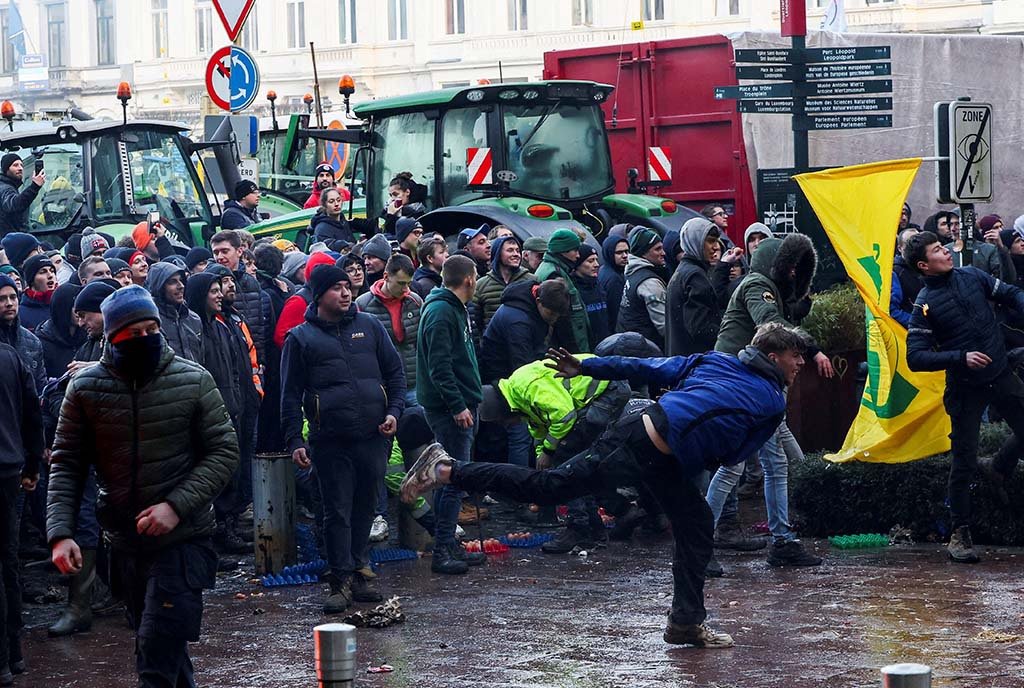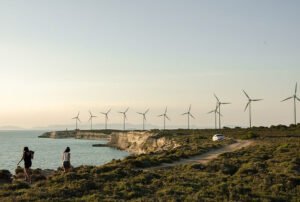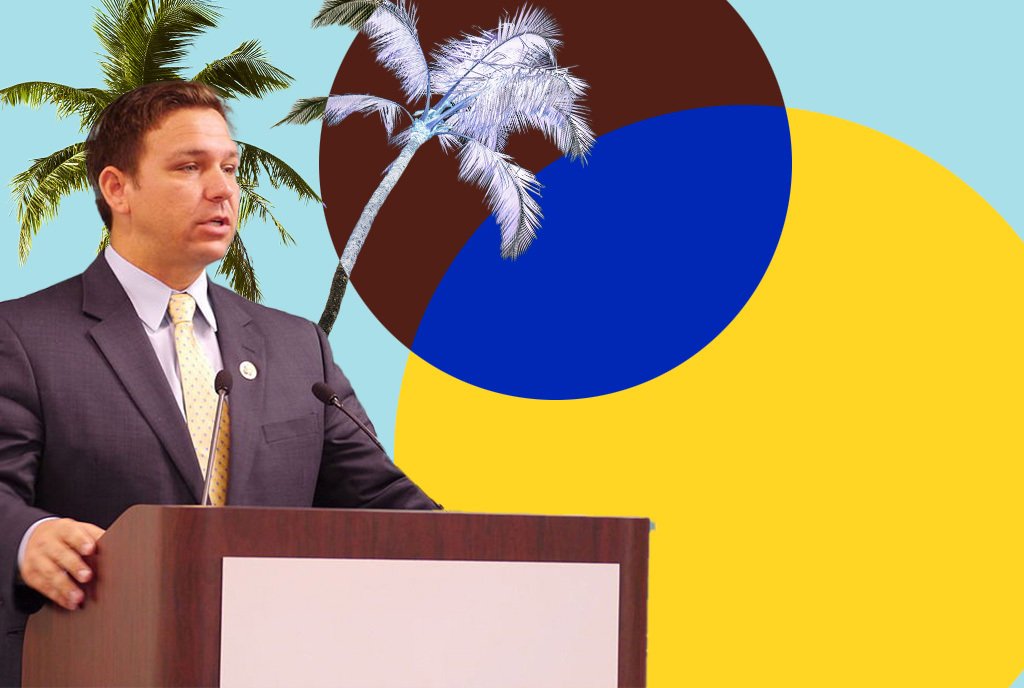
In the United States, consumerism is at an all-time high, with consumer spending reaching a record $15,663.80 billion in the first quarter of 2024, according to the US Bureau of Economic Analysis. This tide of spending and shopping comes despite the critical juncture the country faces regarding the climate crisis, which is partially driven by overconsumerism.
As NPQ wrote in 2023, “While climate justice can seem hopeless at times, in large part because individuals may feel powerless in the face of decisions by large corporations and governments…the purchasing choices of an individual can help. Rampant consumerism and mounting trash and plastic waste are contributing factors to the changing climate. What you buy—or more importantly, don’t buy—can help mitigate some of the impacts of climate change.”
Europe is at a similar crossroads. It’s made recent and notable strides in advancing climate policies and innovations, but in a dramatic shift, Europeans are starting to vote against them. The European Council on Foreign Relations, a research organization, is calling it a “greenlash.” What exactly is this new and abrupt anticlimate stance, and what can be done to turn the tide back toward climate justice?
The Fall of Green Policies
Historically, Europe has been one of the world’s top polluters. But as the New York Times reported, in recent years the 27 countries that make up the European Union have been trying to clean up their act: “They enshrined into law an ambitious target to cut planet-heating emissions by more than half by 2030. They set a 2035 deadline on the sales of new gas-guzzling cars. They expanded the price that industries must pay for emitting greenhouse gases.”
Most people “if confronted with a hypothetical trade-off between low energy prices and climate action,” would choose lower bills.
In 2019, building on the momentum of calls for climate action, the Green party, which promotes environment policies, won “their largest share of seats in European parliamentary elections,” according to the New York Times.
A mere five years later, those gains were lost. Drastically, the Greens lost one-third of their seats in the 2024 European parliamentary elections. As the New York Times wrote in a different article, “something has clearly snapped in much of the European electorate,” citing continuing anxiety about the Ukraine war, high prices for food and housing—which the United States also faces—and rising concerns over the immigration crisis.
In other words, the question overwhelmingly driving the sudden backlash against climate policies and platforms: how much is it all going to cost?
Bas Eickhout, the European Greens’ vice president, said in an interview with the New York Times, “I think there are a lot of people concerned now and asking, ‘OK, can we afford this?’” As the European Council on Foreign Relations explained, “It seems that while Europeans want action to be taken on the climate crisis, they do not want to bear significant costs of the green transition themselves.” When faced with the difficult choice of prioritizing curbing greenhouse gases or cutting high energy bills, most people, “if confronted with a hypothetical trade-off between low energy prices and climate action,” would choose lower bills, according to the organization.
Farmer Protests
Going green can be expensive. Renewable energy, such as solar, is a significant initial investment. Long-range electric vehicles currently cost more than gas-fueled cars. People struggling day to day may have difficulty paying for a future that’s hard to conceptualize.
Sign up for our free newsletters
Subscribe to NPQ's newsletters to have our top stories delivered directly to your inbox.
By signing up, you agree to our privacy policy and terms of use, and to receive messages from NPQ and our partners.
A major concern about the cost of climate action in Europe is agriculture, which occupies 40 percent of the land. Farmers worry that changing the way they farm, including cutting emissions, will cut into their profits.
In response, farmer groups have launched massive and highly publicized protests throughout Europe, including, as the AP reported, “setting fire to a subway station entrance and attacking police with eggs and liquid manure” in Belgium. Meanwhile, the AP noted, “In France, protesters tried to storm a government building.”
Shortly before European elections in June, thousands of farmers worldwide, including from the United States, wrote an open letter in protest of a new EU law against greenwashing. The law bans “generic environmental claims on products without proof,” according to the European Parliament, “claims that a product has a neutral, reduced or positive impact on the environment because the producer is offsetting emissions,” and forbids “sustainability labels that are not based on approved certification schemes or established by public authorities.” Farmers argued that the legislation would penalize animal products, such as wool.
Fighting Greenlash
Along with highly visible farming protests against climate action, Europe differs from the United States and other countries in the amount they have invested in fighting the climate crisis and the impetus they have given businesses to go green. According to the New York Times, “The Biden Administration has showered green energy enterprises, from battery factories to carbon removal projects, with tax incentives.” Aiding in the often higher cost of going green, “China is exporting low-cost solar panels, wind turbines, batteries and electric vehicles worldwide.”
Climate action has an image problem.
Rystad Energy, an energy trends firm, told the New York Times, “The roughly $125 billion that the European Union has invested in clean energy technology would soon fall behind the United States.”
Elisabetta Cornago, a senior research fellow at the think tank Centre for European Reform, argued that “Policy-makers should focus on designing green policies that make decarbonization affordable, and highlight its social benefits.” These outcomes include poverty reduction, greater access to clean air and clean water, and a more reliable food supply—benefits that would be relevant to farmers and the work they do.
Climate action has an image problem. Along with highlighting the many benefits of reducing emissions to communities and businesses alike, “it is important politicians are frank about the social costs of climate inaction,” according to Cornago. “Europe has experienced several extreme weather events in the past years, from floods to wildfires, whose likelihood has been increased by climate change. Their frequency will increase in the future, and so will the damage they cause and the costs of fixing them.”
It’s an urgent challenge faced by those who care about climate action worldwide: to sound the alarm without scaring off support, to highlight the gains of going green while remaining realistic. As Cornago wrote, “Europe cannot fully shield itself from climate change, but it can do its best to mitigate its emissions and adapt to unavoidable climate damage.”












